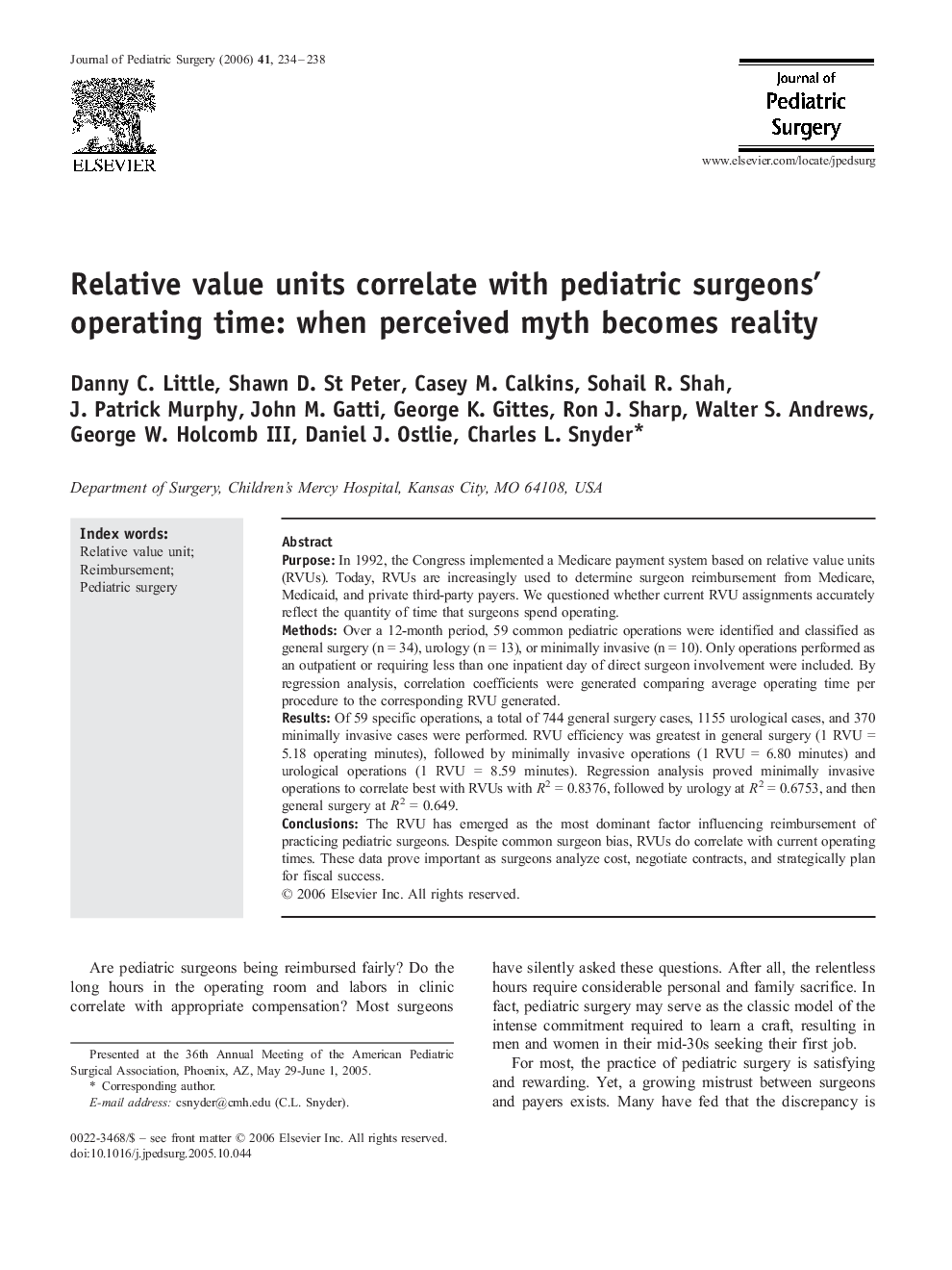| Article ID | Journal | Published Year | Pages | File Type |
|---|---|---|---|---|
| 4160807 | Journal of Pediatric Surgery | 2006 | 5 Pages |
PurposeIn 1992, the Congress implemented a Medicare payment system based on relative value units (RVUs). Today, RVUs are increasingly used to determine surgeon reimbursement from Medicare, Medicaid, and private third-party payers. We questioned whether current RVU assignments accurately reflect the quantity of time that surgeons spend operating.MethodsOver a 12-month period, 59 common pediatric operations were identified and classified as general surgery (n = 34), urology (n = 13), or minimally invasive (n = 10). Only operations performed as an outpatient or requiring less than one inpatient day of direct surgeon involvement were included. By regression analysis, correlation coefficients were generated comparing average operating time per procedure to the corresponding RVU generated.ResultsOf 59 specific operations, a total of 744 general surgery cases, 1155 urological cases, and 370 minimally invasive cases were performed. RVU efficiency was greatest in general surgery (1 RVU = 5.18 operating minutes), followed by minimally invasive operations (1 RVU = 6.80 minutes) and urological operations (1 RVU = 8.59 minutes). Regression analysis proved minimally invasive operations to correlate best with RVUs with R2 = 0.8376, followed by urology at R2 = 0.6753, and then general surgery at R2 = 0.649.ConclusionsThe RVU has emerged as the most dominant factor influencing reimbursement of practicing pediatric surgeons. Despite common surgeon bias, RVUs do correlate with current operating times. These data prove important as surgeons analyze cost, negotiate contracts, and strategically plan for fiscal success.
